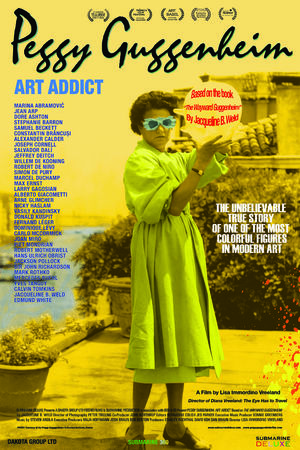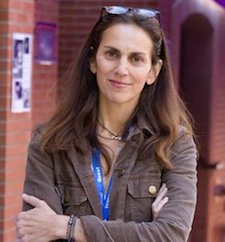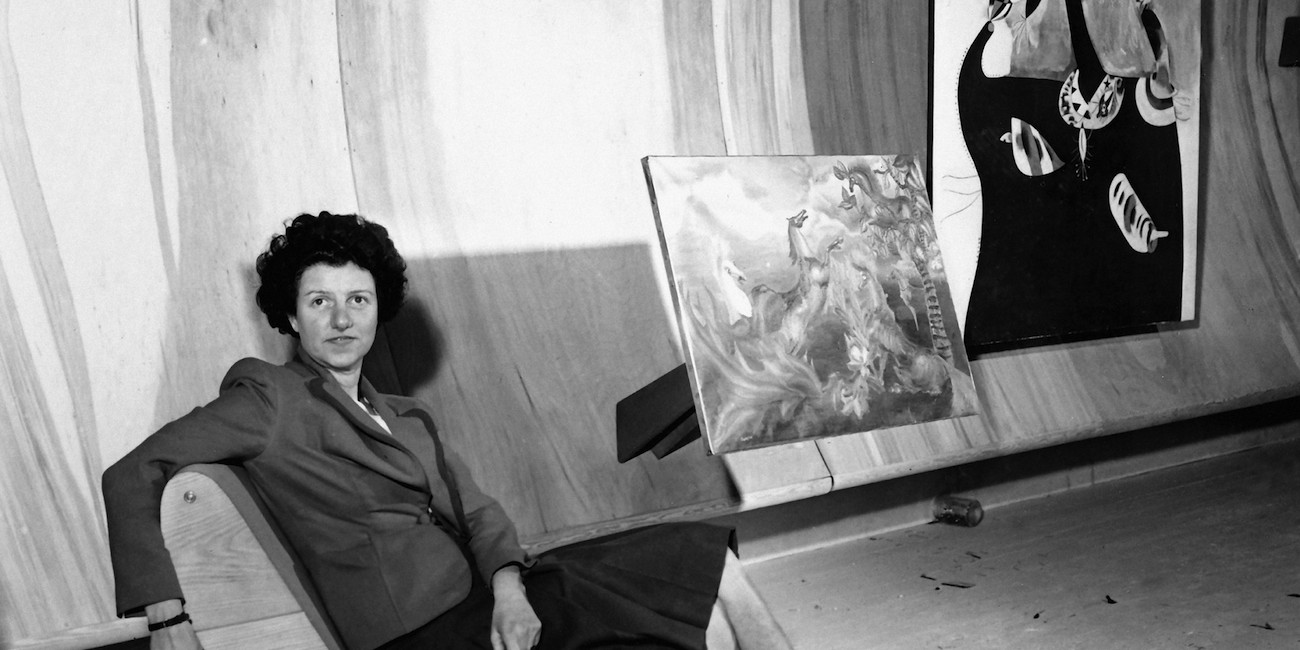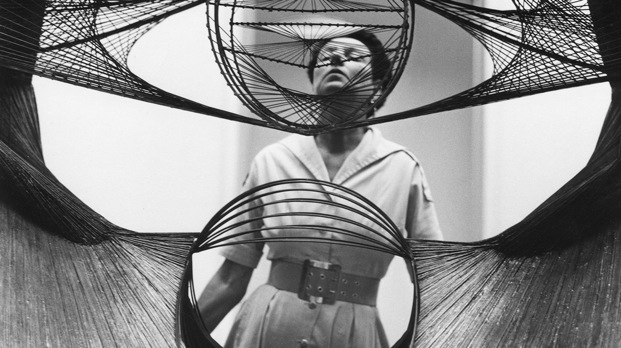 Filmmaker Lisa Immordino Vreeland follows up her acclaimed documentary Diana Vreeland: The Eye Has to Travel with a fascinating portrait of Peggy Guggenheim, a colorful character who was not only ahead of her time, she helped to define it. Peggy Guggenheim was an heiress who became a central figure in the modern art movement. As she moved through the cultural upheaval of the 20th century, she collected not only art, but artists. She became involved with prominent people such as Samuel Beckett, Max Ernst, Jackson Pollock, Alexander Calder, Marcel Duchamp, and countless others. While fighting through personal tragedy, Peggy maintained her vision to build one of the most important collections of modern art in the world, now enshrined in her Venetian palazzo. I sat down with Lisa Immordino Vreeland to discuss this fascinating film.
Filmmaker Lisa Immordino Vreeland follows up her acclaimed documentary Diana Vreeland: The Eye Has to Travel with a fascinating portrait of Peggy Guggenheim, a colorful character who was not only ahead of her time, she helped to define it. Peggy Guggenheim was an heiress who became a central figure in the modern art movement. As she moved through the cultural upheaval of the 20th century, she collected not only art, but artists. She became involved with prominent people such as Samuel Beckett, Max Ernst, Jackson Pollock, Alexander Calder, Marcel Duchamp, and countless others. While fighting through personal tragedy, Peggy maintained her vision to build one of the most important collections of modern art in the world, now enshrined in her Venetian palazzo. I sat down with Lisa Immordino Vreeland to discuss this fascinating film.
Danny Miller: I know next to nothing about modern art but was riveted to every frame of this documentary. Don’t let anyone tell you the movie will just work in a niche market!
 Lisa Immordino Vreeland: Well, they did tell me that at one point. (Laughs.) So that’s very good to hear.
Lisa Immordino Vreeland: Well, they did tell me that at one point. (Laughs.) So that’s very good to hear.
It’s so interesting consider Peggy Guggenheim in the context of your previous subject, Diana Vreeland.
Those two women are so completely different. Mrs. Vreeland was so inspiring — she could say something about a doorknob and you’d be like, “Oh wow!” She was so full of emotion and passion. Peggy Guggenheim was nothing like that. You could see that there was this emotional wall that was up. I don’t think she really understood what love was. She wasn’t terribly loved by her parents. And she grew up during a time when parents led really separate lives from their kids.
Especially in those wealthy circles, I would imagine.
Yes, especially in that very privileged world. And if you’re not loved, how can you give love? You don’t have a reference. Peggy was brought up by these very strict nannies, and she wanted to rebel from that which she certainly did. Once she finally decided on a certain métier in life, when she was about 40, she threw herself into it 100 percent. Her own two children were definitely put aside. That’s not a particularly attractive characteristic, but her achievements in the art world were immense — beyond the grasp of most people today. She had such a broad influence and a pivotal role in several cities: London, New York, Paris, and Venice.
Do you think she was taken seriously by the art community at the time?
No, I don’t, at least not initially. Some of that had to do with her prickly personality as well as her whole sexual side. She fell in very quickly with a certain crowd of artists and surrounded herself with people that helped to shape her views about art. Marcel Duchamp was the perfect example —he obviously knew she had something to give besides just money. He became her mentor and her teacher and he did not get anything from that.
Would you say that Peggy was ahead of her time?
Yes, I would. When she got to New York, she created this space for the exiled artists and New York artists to intermingle. They all knew each other through their work with the WPA but there was no real foundation for the Abstract Expressionist School yet.
What did you think of the way Peggy was portrayed (by actress Amy Madigan) in the Ed Harris movie Pollock?
I didn’t like it but I have a very different understanding of Peggy’s contributions to Jackson Pollock’s legacy. But, you know, Peggy was not the most giving of human beings, she was a very tough cookie. After Pollock died, a journalist called her up and asked her how painful his death was to her and she grumbled something like, “Oh, I don’t care!” And then she sued his wife Lee Krasner and the Pollock estate. Peggy and Lee had a completely contemptuous relationship.
Do you think the Guggenheim name opened a lot of doors for Peggy?
Honestly, no. I don’t know if it really opened many doors at all. Remember that her uncle, Solomon Guggenheim, was collecting art at the same time, but his collections were entirely different: Matisses and Gaugins with his wife at the Plaza Hotel and then Boyers and Kandinskys with Hilla Rebay at the museum. Peggy’s collections were much more rounded.
Does she have a permanent presence at the Guggenheim in New York?
Oh, not at all. That exhibition we show in the film was just temporary. Peggy’s collection is mostly in Venice. We shot there on a day that the museum was closed which was wonderful — you really felt her presence.
Do you always feel a strong presence of your subjects as you’re making your movies? Of course you had a familial connection to Diana Vreeland.
Not really. She was my husband’s grandmother but I had never met her.
You must feel protective of them, though.
Yes, very much so. And I feel a real responsibility to be accurate in telling their stories, it’s a real privilege to be in that position. With Diana Vreeland, I didn’t feel any pressure from my husband’s family to tell the story in a certain way. In the case of Peggy, I think the attention on her sex life has been overplayed — I wanted to balance it out and show how her contributions to the art world were so much more important.
Still, Peggy Guggenheim’s many affairs with people from that world are fascinating.
They are, and there a lot of other interesting stories we didn’t include because we just didn’t have time. There was this one very handsome man, Douglas Garman, that Peggy went out with for a while. Then she said, “He got very into Communism and every time I was with him I felt like I was getting commands from Moscow!” (Laughs.)
It must have been hard to leave certain things out — you had such a wealth of delicious footage at your disposal. How deep into the film were you when you found those wonderful audiotapes of the interviews Peggy did with Jacqueline Weld?
We were pretty deep into it and were planning to create our own voiceovers of her with interview bits and possibly someone reading her words. But after we found the tapes, we peeled all that out and inserted those clips. Hearing her actual voice is a huge thing.
I must say I was pretty floored about those allegations about Peggy’s sister — that she may have murdered her own children! What a story. Did you consider not including that in the film?
I know, it’s crazy. That was a conversation we had with the producers but they wanted to put it in. A huge concern with a film like this is that you have so much historical material and you don’t want to overwhelm viewers. There are several different threads.
I went home and researched the original New York Times article about her sister and her kids’ deaths. Very shocking. Were any of Peggy’s grandchildren involved in the making of this film?
Only her lovely granddaughter, Karole Vail, who you see in the film. Some of the others have been suing the Guggenheim Foundation so we didn’t have any contact with them at all.
Do you think if Peggy’s father, Benjamin Guggenheim, had not gone down with the Titanic in 1912 that Peggy’s life might have been very different?
It’s quite possible. I do think the hunger that Peggy had for men was very connected to trying to replace this father figure in her life. That and the fact that these were very cute and sexy artists who were hard to turn down!


